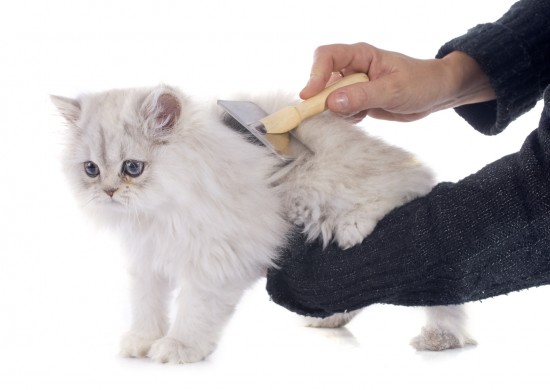
Our eyes are a signal of our overall health. This is utterly true for our feline friends as well, so if you are worried about a feline eye problem, be sure to take a trip to see the doctor.
While it might not seem to be a big problem if your cat’s eyes are tearing, or infected, or perhaps dry, the issue may result in problems such as cornea scarring, which causes sight problems. If you see anything that appears to be bothering your cat’s eyes, don’t wait to try and guess what is occurring; take a trip to see the veterinarian straight away, as some eye problems are connected to other underlying conditions that can be of an even greater concern for your cat. As an example, some kittens and cats with neoplasms or malignancies, will show eye problems, because of cancer, since this influences their immune response and areas such as the eyes.
What other diseases present as cat eye problems? While the list is quite extensive, most common ones are:
– Conjunctivitis neonatorum (herpes pathogen)
– Entropion (eyelids roll inwards)
– Eyelash disease (lashes irritate the eyes)
– Inherited conditions
– Buldging eyes
– Retinal degeneration
– Iris cancer
– Clouded eyes
– Glaucoma
– Hyperactive tear drainage system
– Tearing eyes
– Third eye bump (nictitating surface)
– Crossed eyes (may be caused by paralysis)
– Soft or hard eyes (because of changes in eye pressure)
– Lid irritation
– Unusual eye movements (a relocation that moves the eye up and down or to the side)
Be sure to look for indicators of eye infection. It'll save your cat’s vision if you identify any issues in time. You will notice squinting, a teary or mucous-like discharge, reddish and swollen eye membranes, a cloudy cornea, a dull iris or one that’s a different colour than the other eye. Also be aware that eye infection may be present in one or two eyes at the same time. You’ll also hear a lot of sneezing and notice dribbling. This likely indicates a breathing problem or a respiratory tract infection. The bottom line is, if you happen to spot something isn't normal with your cat’s eyes, get them examined.
Treatment protocols for cat eye issues varies, because it depends on what the exact concern actually is. For example, diseases related to Cat Chlamydia or Feline Mycoplasma would necessitate the use of topical antibiotics, and possibly topical anti-viral drops or medicines. If the infection is due to FHV-1, you'll be having a long discussion with the vet, as this doesn’t make a response to topical antibiotics. The vet will discuss with you what other alternatives are available. Generally speaking, these types of contagions may be controlled, although not completely cured.
If you would like to try the holistic, natural angle, there are lots of remedies to be found that could be successful as part of a treatment plan prescribed by your vet. The most notable eye remedies on the market are those with meadowsweet, rosemary, burdock and chelidonium majus.
You may notice these ingredients are also selected based on their ability to boost the immune system. This isn’t a coincidence. Sickness is a result of a weakened immune system. In this case you might want to raise your cat’s natural immunity and in turn their health can be improved. If you decide to go with the natural route, be sure the vet is aware, as natural options and traditional approaches may not act as replacements for each other.
Cathy Doggins is the editor of the Cat Health Guide, a highly respected web based reference for cat eye problems. When not paying attention to her 2 cats, Cathy is a frequent contributor to and researcher of a variety of pet health subjects and a supporter for many feline related causes.
 If Humans are Merely Animals, Why do they rule the Surface of the Planet
If Humans are Merely Animals, Why do they rule the Surface of the Planet
 Crufts - The Kennel Clubs Elite Dog Show
Crufts - The Kenn
Crufts - The Kennel Clubs Elite Dog Show
Crufts - The Kenn
 How To Groom A Long-haired Persian Cat
How To Groom A Lo
How To Groom A Long-haired Persian Cat
How To Groom A Lo
 Understanding The Pecking Order Of Horses
Understanding The
Understanding The Pecking Order Of Horses
Understanding The
 How Closely Related Are The Siberian Husky And The Wolf?
How Closely Relat
How Closely Related Are The Siberian Husky And The Wolf?
How Closely Relat
Copyright © 2005-2016 Pet Information All Rights Reserved
Contact us: www162date@outlook.com